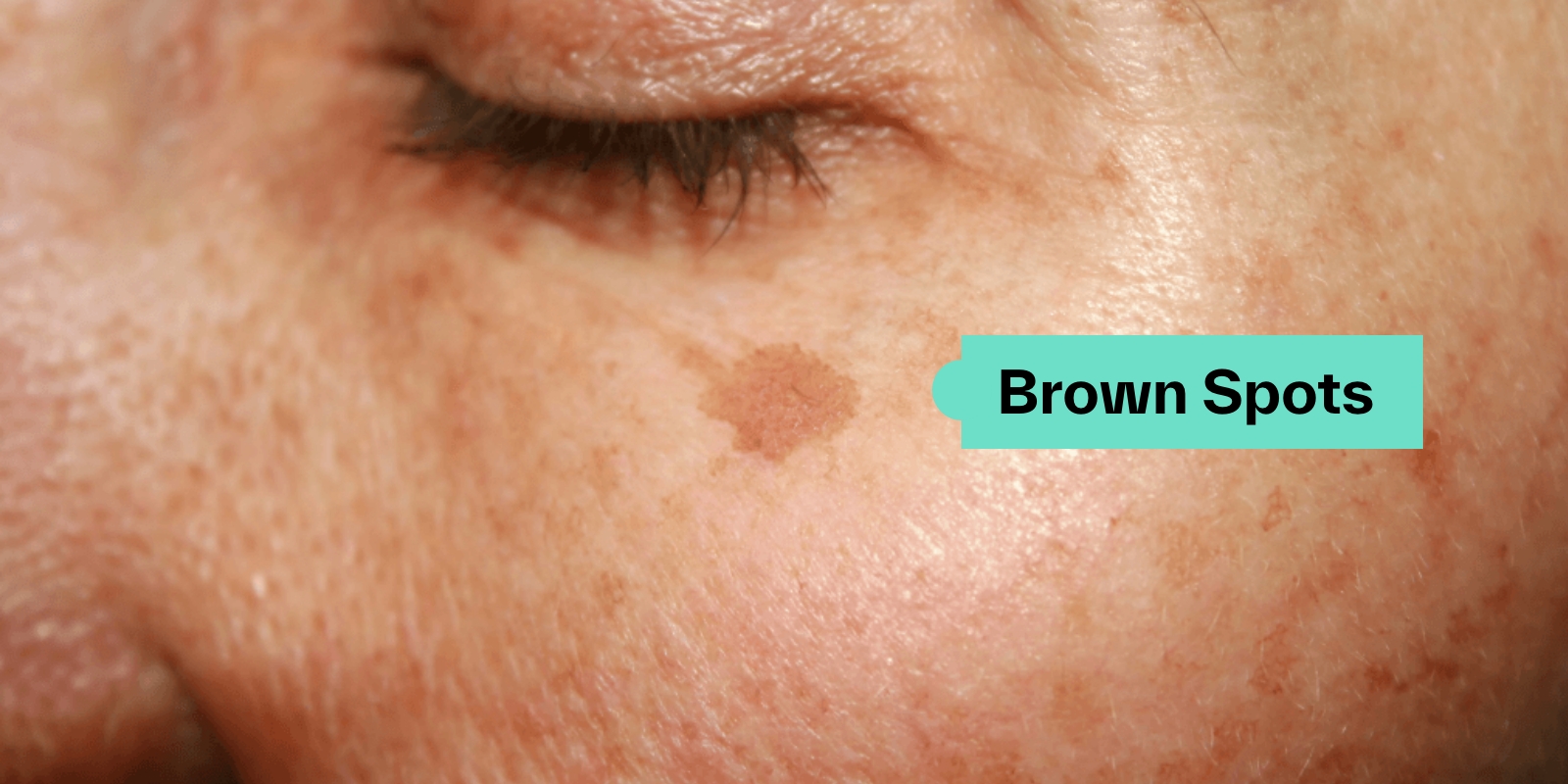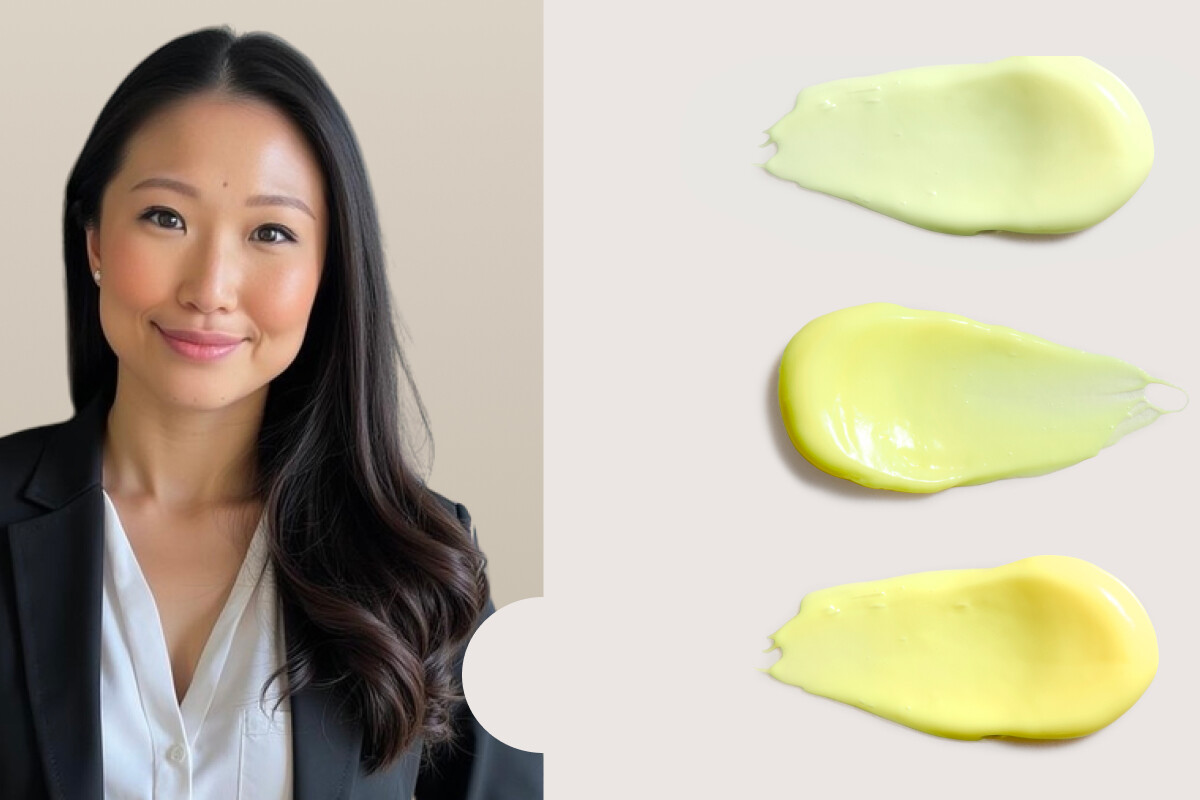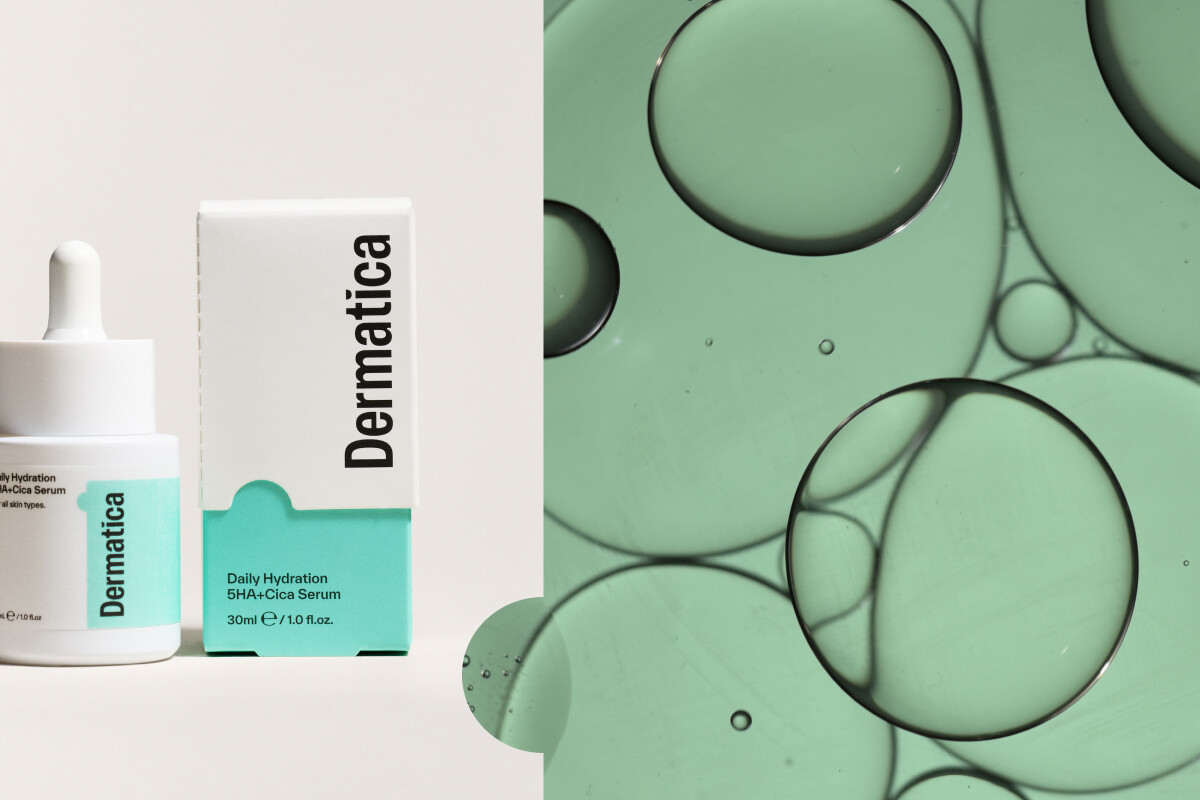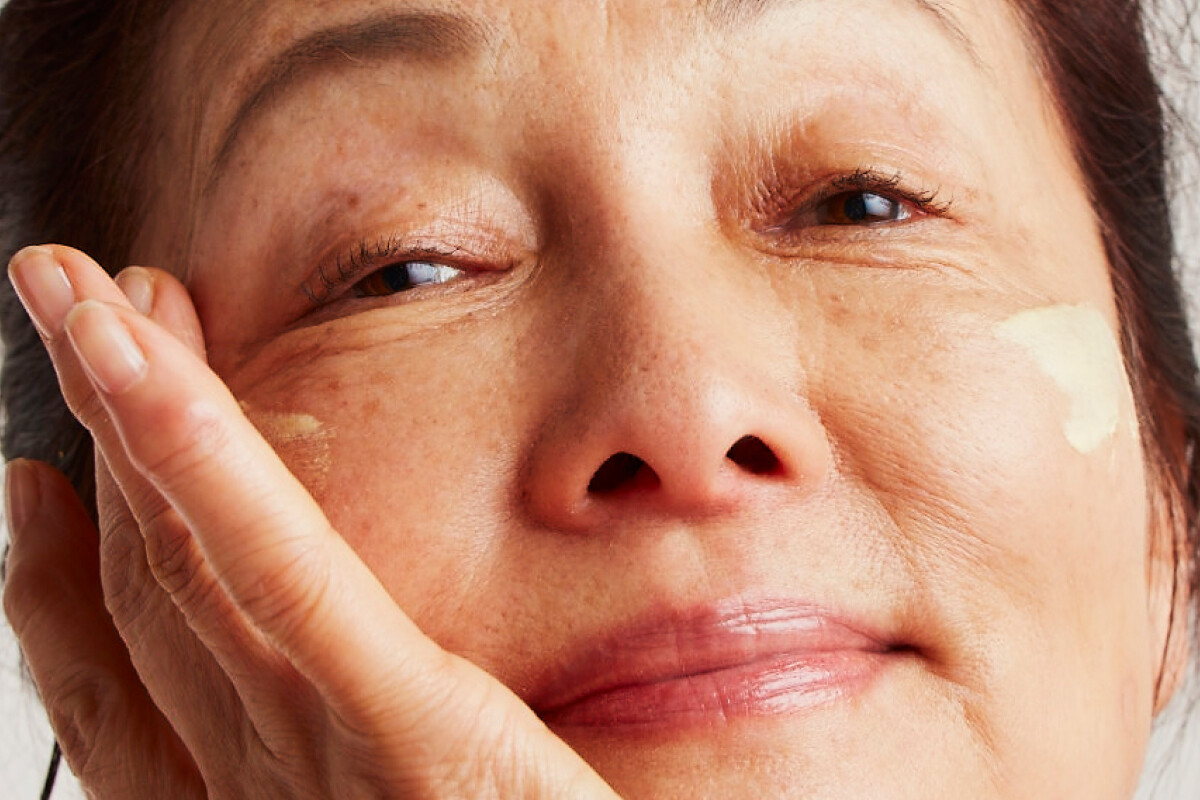It’s common for new dark spots to suddenly appear on the skin. There are many reasons why this might occur – but this time of year most signs point towards hyperpigmentation caused by sun exposure. Read on to understand why your brown spots have appeared, and the evidence-based methods we use to treat this skin condition.
Causes Of Brown Spots
There are three main causes for brown spots or hyperpigmentation to form. The first being melasma (sometimes called chloasma) which usually affects women.
It appears as dark patches on the face, as the result of sun exposure or a change in hormone levels. Many women find it’s triggered by pregnancy hormones which is why it’s also known as the pregnancy mask. (1)
Another cause is age spots or sunspots, which are flat, tan, brown, or black spots that are caused by prolonged sun exposure. (2)
Thirdly, dark spots may appear after skin inflammation or injuries to the skin (like acne). These are referred to as a form of post-inflammatory hyperpigmentation.
Read more about hyperpigmentation here.
Sun Exposure And UV Damage
While there are many reasons our skin might age prematurely – sun exposure is shockingly responsible for around 80% of that damage. (3) Premature wrinkles and sagging skin aside, too much exposure to UV radiation stimulates cells in our skin to produce more pigment (medically known as melanin), which can cause dark spots to form. And more seriously – this can also increase your risk of developing skin cancer. (4)
Upon penetrating the skin, UV rays produce free radicals (also known as oxidative stress) – a known cause of skin damage. It also weakens the skin’s natural defences by depleting its antioxidants. What’s more, when UV rays penetrate unprotected skin, they also cause the collagen inside – the scaffolding that helps keep the skin looking firm and smooth – to break down at an accelerated rate. (5)
Treatment Options For Brown Spots
Can you reverse sun damage? The damage to our DNA cannot be reversed, but the dark spots and collagen damage can be treated using either prescription products and/or over the counter treatments. (4)
Oral antibiotics like doxycycline are also prescribed to treat post-inflammatory hyperpigmentation from conditions like acne. Used in conjunction with topical (applied to the skin) treatments, they can reduce the likelihood of new spots forming and calm the inflammation in the skin that leads to dark spots. (5)
Retinoids
This group of well-researched active ingredients help skin experiencing hyperpigmentation by speeding up the skin’s natural cell turnover. This causes the skin to shed its dead, damaged skin cells – which is where most of the dark spots will appear. This makes way for the formation of healthy new skin cells.
Two popular prescription retinoids to tackle stubborn dark spots are tretinoin and adapalene. Tretinoin has decades of evidence to prove its effectiveness at improving fine lines, uneven skin tone, and dark spots – all while boosting collagen production, too. (8) You can see just how transformative it has been for Dermatica customers with this before-and-after here. While if you’ve got sensitive skin with hyperpigmentation, adapalene is a gentler retinoid that works in a similar way to achieve smoother, more even skin. (6)
Hydroquinone
A particularly effective treatment for sun spots, hydroquinone helps to fade hyperpigmentation but can only be used for a short length of time. Your licensed dermatology prescriber will tell you how long to use it for, and when to take the necessary breaks, to prevent it from damaging your skin’s protective barrier or causing skin irritation. (7)
Tranexamic Acid
Tranexamic acid works in a slightly different way to target hyperpigmentation – and is gentle enough to use for longer periods of time. Rather than removing the damaged skin and triggering collagen synthesis, it interrupts how the skin produces pigment – which helps brighten and even out the skin effectively. (8)
Read more about this hyperpigmentation treatment here.
Lifestyle Changes To Reduce Brown Spots
While changes to your daily habits won’t reverse existing sun damage, there are things you can do to prevent it from worsening and to help prevent further hyperpigmentation.
Sun Protection Strategies
The most important thing you can do for your skin (with or without hyperpigmentation) is to wear sunscreen every day. Not only to lower your risk of skin cancer, but to help prevent damage to the skin cells which can lead to premature ageing and pigmentation. Here at Dermatica, our dermatology experts recommend you wear broad-spectrum sunscreen (chemical or mineral) with at least SPF30+ every day, topping it up every two hours when out in the sun. You can significantly boost your chances of avoiding sun damage by covering up with sun-protective clothing and hats too. (9)
Skincare Routines
We mentioned earlier how UV radiation can damage the skin’s natural antioxidant stores. Replacing these with skin care products is all-important to protect it from further damage. Vitamin C in its pure form (ascorbic acid) is the science-backed way to neutralise free radicals, reduce oxidative stress on the skin, brighten dark spots and boost collagen. (10) Here at Dermatica we developed a trio of potent antioxidants to do just that – we recommend applying our Vitamin C 15%: Fresh Batch Ascorbic Acid every morning before your sunscreen for optimal protection.
Another way to improve sun damage and simultaneously protect the skin from oxidative stress is to add niacinamide into your daily routine. Niacinamide is an active that helps reduce inflammation and pigmentation, while hydrating and protecting the skin barrier. It’s prescribed in many of our personalised formulas and is also used in our Hydrating Hyaluronic Acid + Vit B5 Serum, Soothing Centella Gel Moisturiser and Nourishing Ceramide + Peptide Moisturiser. (11)
Finally, our dermatology experts recommend adding azelaic acid to your skincare arsenal. This multi-tasking ingredient brightens and fades hyperpigmentation (as well as reduces the appearance of blemishes) – you can find it in our Clarifying Azelaic Acid Cream. And unlike some stronger prescription ingredients, it is suitable for sensitive skin, throughout pregnancy and while breastfeeding. (12)
Find out which formulas might be suitable for your skin by visiting our website here.
References
1. Basit H, Godse KV, Al Aboud AM. Melasma [Internet]. PubMed. Treasure Island (FL): StatPearls Publishing; 2023. Available from: https://www.ncbi.nlm.nih.gov/books/NBK459271/
2. Choi W, Yin L, Smuda C, Batzer J, Hearing VJ, Kolbe L. Molecular and histological characterization of age spots. Experimental Dermatology. 2017 Feb 9;26(3):242–8.
3. Raymond-Lezman JR, Riskin S. Attitudes, Behaviors, and Risks of Sun Protection to Prevent Skin Cancer Amongst Children, Adolescents, and Adults. Cureus. 2023 Feb 13;15(2).
4. Ambagaspitiya SS, Appuhamillage GA, Dassanayake RS. Impact of vitamin D on ultraviolet-induced photoaging and skin diseases. Exploration of Medicine [Internet]. 2024 May 20 [cited 2024 Aug 15];363–83. Available from: https://www.explorationpub.com/Journals/em/Article/1001225
5. Afrin A, Cohen PR. Doxycycline-Associated Hyperpigmentation: A Case Report and Literature Review. Cureus. 2022 Apr 2;
6. Lee JH, Roh MR, Lee KH. Effects of Infrared Radiation on Skin Photo-Aging and Pigmentation. Yonsei Medical Journal [Internet]. 2006 [cited 2019 Jul 25];47(4):485. Available from: https://www.ncbi.nlm.nih.gov/pmc/articles/PMC2687728/
7. Sitohang IBS, Makes WI, Sandora N, Suryanegara J. Topical tretinoin for treating photoaging: A systematic review of randomized controlled trials. International Journal of Women’s Dermatology. 2022 Mar;8(1):e003
8. Tolaymat L, Zito PM. Adapalene [Internet]. PubMed. Treasure Island (FL): StatPearls Publishing; 2020. Available from: https://www.ncbi.nlm.nih.gov/books/NBK482509/
9. Schwartz C, Jan A, Zito PM. Hydroquinone [Internet]. PubMed. Treasure Island (FL): StatPearls Publishing; 2023. Available from: https://www.ncbi.nlm.nih.gov/books/NBK539693/
10. 5. Gaćina K. The Use of Tranexamic Acid in Dermatology. Acta Clinica Croatica. 2023 Jan 1;
11. Gabros S, Zito PM. Sunscreens And Photoprotection [Internet]. Nih.gov. StatPearls Publishing; 2019. Available from: https://www.ncbi.nlm.nih.gov/books/NBK537164/
12. Pandel R, Poljšak B, Godic A, Dahmane R. Skin Photoaging and the Role of Antioxidants in Its Prevention. ISRN Dermatology [Internet]. 2013;2013:1–11. Available from: https://www.ncbi.nlm.nih.gov/pmc/articles/PMC3789494/
13. Sauer N, Małgorzata Oślizło, Brzostek M, Wolska J, Katarzyna Lubaszka, Katarzyna Karłowicz-Bodalska. The multiple uses of azelaic acid in dermatology: mechanism of action, preparations, and potential therapeutic applications. Postępy Dermatologii i Alergologii [Internet]. 2023 Jan 1;40(6):716–24. Available from: https://www.ncbi.nlm.nih.gov/pmc/articles/PMC10809820/
Ash Sharma
Dr Ashwin Sharma is a medical doctor and writer with a particular interest in health technology, artificial intelligence and medical weight loss. He completed his training at the University of Leicester and Imperial College London, and has since been exploring the intersections of medicine, technology, and communication.
Related Posts
October 30, 2025
0 Comments11 Minutes





